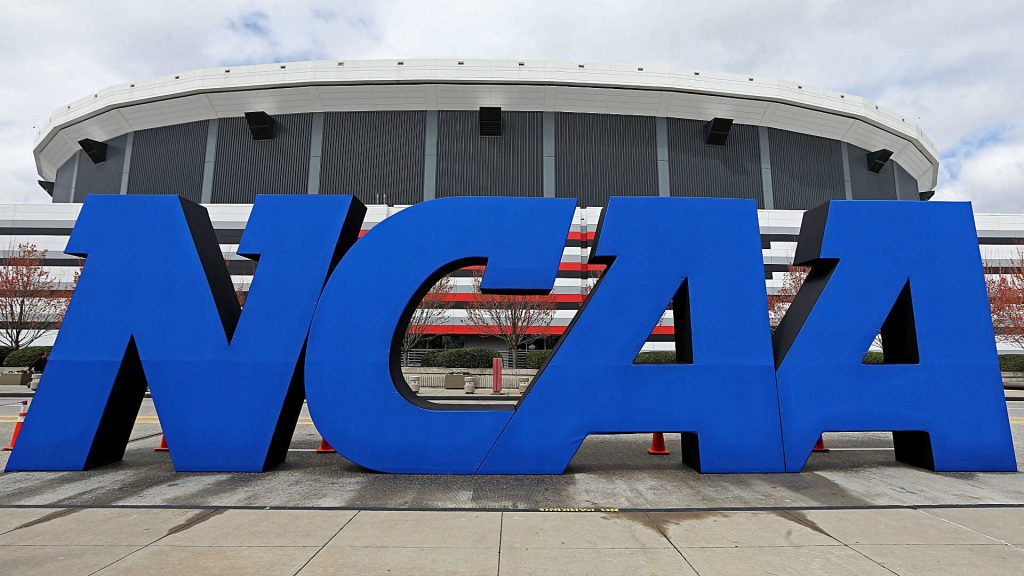Why Is NCAA Proposing For Subdivision? Explained
In a letter to Division I members on Tuesday, NCAA President Charlie Baker suggested the establishment of a new competitive subdivision in which institutions would have to pay their athletes far more than the association’s existing regulations permit.
Why Is the NCAA Proposing For Subdivision? Explained
Schools in this new category would have to “invest at least $30,000 per year into an enhanced educational trust fund for at least half of the institution’s eligible student-athletes” in accordance with Baker’s plan, which would fall “within the framework” of Title IX, the federal gender equity statute.
NCAA president Charlie Baker is proposing the creation of an FBS subdivision that permits schools to directly compensate athletes thru a trust fund & NIL, sources tell @YahooSports.
It is perhaps the most revolutionary concept introduced in NCAA history.https://t.co/wf56mmBZnZ
— Ross Dellenger (@RossDellenger) December 5, 2023
Half of the funds allotted would have to go to female athletes in accordance with Title IX regulations, which would apply to any money disbursed by the institution. To increase pay, schools might then negotiate additional NIL arrangements on top of the base remuneration that is provided through a trust.
At the top level, several athletic departments want to field more than 400 scholarship players in more than 20 sports. It would take $6 million a year to pay half of those athletes the base salary of $30,000. This is a significant financial commitment to sports. That sum is on top of what scholarships cost.
Breaking: In radical change, NCAA proposing new subdivision to allow schools to pay athletes directly https://t.co/B0i2OOBAxn via @zach_barnett
— FootballScoop (@FootballScoop) December 5, 2023
The new subdivision would differ significantly from the existing one in that its members would have the ability to negotiate NIL deals with their own athletes.
“It kick-starts a long-overdue conversation among the membership that focuses on the differences that exist between schools, conferences and divisions and how to create more permissive and flexible rules across the NCAA that put student-athletes first,” Baker writes in the letter. “Colleges and universities need to be more flexible, and the NCAA needs to be more flexible, too.”
End Of College Sports As We Know It: NCAA President Is Reportedly Proposing A New Football Subdivision Where Schools Can Pay Players Directly https://t.co/L27SQ4JI9G pic.twitter.com/sjYILHlDPK
— Barstool Sports (@barstoolsports) December 5, 2023
The suggestion was made little over nine months after Baker took office as president of the NCAA, taking over the organization at a period of significant turmoil in college athletics. Apart from the numerous court cases over athlete remuneration, the organization has been confronted with increasing dissatisfaction among the universities that incur the highest costs and earnings.
Concerns have been raised regarding the financial and competitive implications of this, though, for the larger Division I membership of the NCAA, especially in light of the recent changes to Division I rules that permit athletes to earn money from the NIL and to transfer schools once without having to wait a year.
A new NCAA proposal could pave the way for schools to pay athletes directly through trust funds and NIL by creating a new FBS subdivision. pic.twitter.com/YEcgmvxwrW
— Yahoo Sports (@YahooSports) December 5, 2023
Following the publication, a number of athletic directors publicly endorsed Baker’s proposal. Trev Alberts, athletic director of Nebraska, referred to the proposal as a “significant advancement.” One of the leading figures in the sport, Gene Smith, the athletic director at Ohio State, posted a supportive message on Twitter.
With almost 1,000 athletes, the Buckeyes have one of the largest athletic departments in the country. Ohio State University would have to pay at least $15 million a year for the planned scheme. OSU Athletics brought nearly $250 million in revenue in 2022.
NEWS: NCAA president Charlie Baker is proposing a new FBS subdivision that would permit schools to directly compensate athletes through a trust fund and NIL. pic.twitter.com/aZsYyoqRgv
— Front Office Sports (@FOS) December 5, 2023
Additionally, schools in the new subdivision would have independence on matters pertaining to countable coaches and scholarship caps.
For the majority of sports, programs in both Division I subdivisions would face off for NCAA titles; FBS football will not be included in this competition. All of that will continue to exist under the framework of the College Football Playoff.
The goal of this initiative is to spark a meaningful discussion about one of the most divisive issues in college athletics—major changes. However, it will be an extremely expensive purchase for sports departments.
NCAA president Charlie Baker proposes the creation of a new Division I subdivision that would allow high-resource schools to compensate athletes via trust funds and NIL. https://t.co/PL1EKex30W
— Eleven Warriors (@11W) December 5, 2023
How to get NCAA Division 1?
- English: 4 years.
- Math (Algebra 1 or higher): 3 years.
- Natural/Physical Science (Including 1 year of lab, if offered): 2 years.
- Social Science: 2 years.
- Additional Courses. English, Math or Science: 1 year.
The NCAA has proposed the formation of an FBS subdivision that would allow schools to directly compensate student-athletes through NIL and a trust fund.
Experts say it's the "most revolutionary compensation plan the NCAA has proposed."@EricPrisbell: https://t.co/12o6oBVmlH pic.twitter.com/XSvHjZeOjz
— On3 NIL (@On3NIL) December 5, 2023
What is difference between FCS and FBS?
Why Do FCS and FBS Differ From One Another? Football Bowl Subdivision (FBS) and Football Championship Subdivision (FCS) differ primarily in the amount of scholarships available to participating institutions. FBS teams are limited to 85 total scholarship players, whilst FCS programs are limited to 63 scholarships.
FOR MORE SPORTS COVERAGE-
UFC Star Conor McGregor Lays Down Future Career Plans: Aims To Be Irish President


